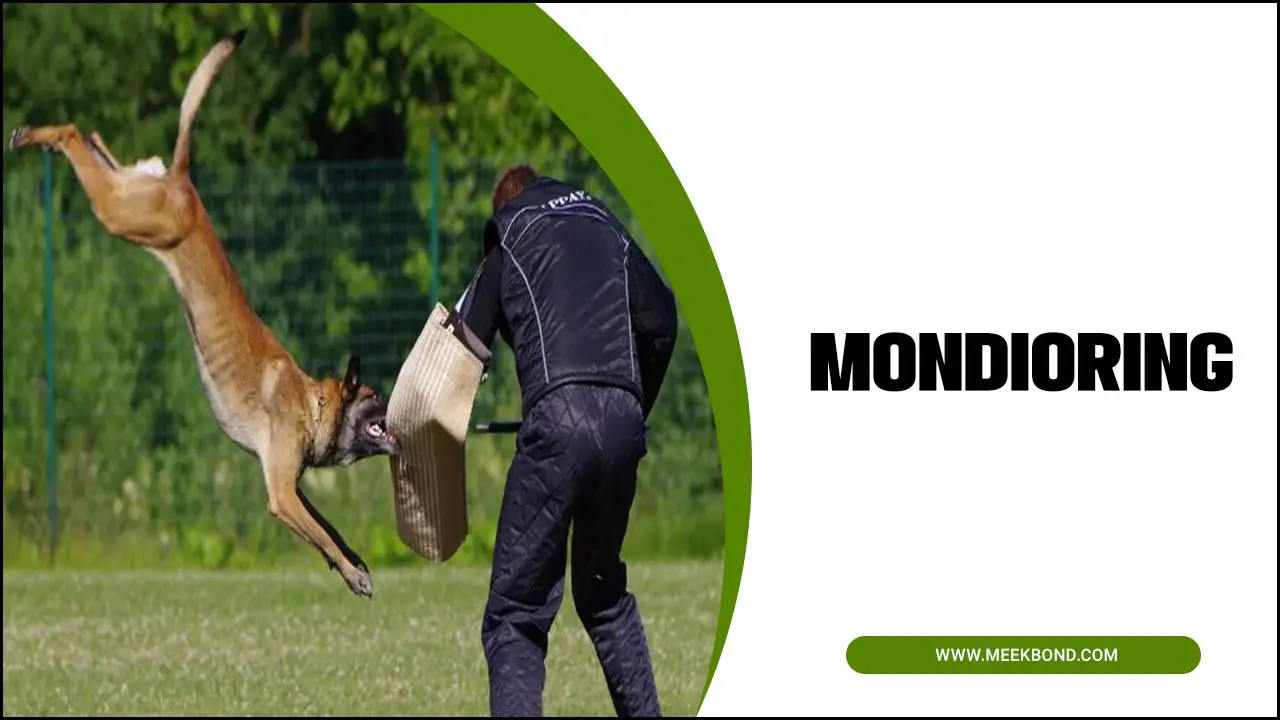As a pet parent, you want the best for your furry friend. However, things may not go as planned, and you may notice something unusual happening inside the mother’s womb. One of the most distressing situations is when you suspect a dead puppy inside the mother.
It is important to recognize signs of a dead puppy inside the mother as it could pose serious health risks to the mother and other puppies. Here we will explore signs of a dead puppy inside mother. We will also discuss what happens when a dead puppy is not delivered and the role of veterinary intervention in handling such complications.

Exploring Signs Of A Dead Puppy Inside Mother

Early detection of deceased puppies within a mother dog’s womb is vital for the overall health and well-being of the mother dog. Recognizing the signs of a dead puppy can prevent potential complications.
Ensuring the safety of both the mother and the remaining puppies. If there is suspicion of a dead puppy, immediate veterinary attention is necessary to address any underlying issues. Here are a few signs of a dead puppy inside mother:
- – Lack of fetal movement: One of the first signs that a dead puppy may be inside the mother is a lack of fetal movement. If you have been feeling regular movement from the puppies and suddenly notice a decrease or complete absence of movement. It could indicate that one or more puppies have died.
- – Change in size or shape of the mother’s abdomen: As the pregnancy progresses. The mother’s abdomen will naturally grow larger to accommodate the developing puppies; however, if you notice a sudden change in the size or shape of her abdomen. Such as a noticeable decrease in size or an asymmetrical appearance could be a sign that one or more puppies have died.
- – Vaginal discharge: Another potential sign of a dead puppy inside the mother is the presence of abnormal vaginal discharge. This can range from a foul odour to a bloody discharge. It is important to note that some discharge is normal during pregnancy, but any significant changes should be brought to the attention of a veterinarian.
- – Loss of appetite or lethargy: If the mother suddenly loses her appetite or becomes unusually lethargic. It could indicate that she is experiencing complications with her pregnancy, including the death of one or more puppies. These symptoms should not be ignored and should prompt immediate veterinary attention.
Common Factors Leading To Puppy Mortality Inside Womb
Several common factors can lead to puppy mortality inside the mother’s womb. It is important to be aware of these signs to ensure the health and well-being of both the mother and her puppies.
If you suspect that there may be a dead puppy inside the mother, it is crucial to consult with a veterinarian immediately for proper diagnosis and treatment. Some common factors leading to puppy mortality include:
- – Maternal health issues: If the mother has underlying health conditions such as infections or hormonal imbalances, it can increase the risk of puppy mortality.
- – Fetal abnormalities: Sometimes, puppies may develop abnormalities or genetic defects that prevent them from developing properly in the womb.
- – Poor nutrition: A lack of proper nutrition during pregnancy can impact the development of the puppies and increase the risk of mortality.
- – Trauma or injury: In some cases, trauma or injury to the mother can result in fetal death.
Identifying Maternal Symptoms Indicating A Problem

When a mother dog is experiencing distress, such as excessive panting, whining, or restlessness, it could indicate a problem with the pregnancy. Another symptom to watch for is a high fever in the mother dog, which may suggest an infection or complications. Additionally, if the mother dog lacks appetite or refuses to eat, it could be a sign of a problem with the pregnancy.
Rapid or irregular breathing in the mother dog may also indicate distress or complications. Furthermore, excessive lethargy or weakness in the mother dog can be a concerning symptom. Dog owners must pay close attention to these signs of distress and consult a vet if any issues arise during their dog’s pregnancy.
Spotting Physical Signs In Mother Dog: Key Indicators
Physical signs in the mother dog can provide key indicators of a problem with the pregnancy. One such sign is swelling or redness around the vulva, which may suggest a complication. Abnormal vaginal colour, consistency, or odour discharge can also indicate a problem. Additionally, engorged mammary glands that are painful or hot to the touch may indicate complications.
Another indicator is abdominal discomfort or sensitivity when touched. Changes in the mother dog’s body temperature, such as a fever or hypothermia, can also signal a problem. These physical signs should be closely monitored, and if observed, it is crucial to seek veterinary intervention for proper diagnosis and treatment.
Prolonged Labor And Absence Of Puppy Movement: What It Signifies?
Prolonged labour with no progress or lack of puppy movement are significant indicators of a deceased puppy. Ineffective contractions and the mother dog’s inability to push out a puppy despite prolonged labour are also telltale signs to look out for.
An absence of fetal heartbeat or movement detected through ultrasound is another warning sign. Sometimes, an open cervix without puppies being delivered may also suggest a deceased puppy. It is crucial to closely monitor the mother dog during labour and contact a veterinarian immediately if any of these symptoms are noted.
Understanding The Implications Of Maternal Fever

Maternal fever in dogs can be a sign of infection or other complications. Understanding that a high fever in the mother dog can pose a life-threatening risk to both her and the remaining puppies is crucial. Immediate veterinary attention and treatment may be necessary in such cases. Infections during pregnancy can result in stillborn puppies or severe health issues for the surviving puppies.
Therefore, monitoring the mother dog’s temperature and promptly seeking veterinary help for any fever is paramount. In such situations, a vet may recommend antibiotics or other treatments to ensure the health and well-being of the mother and her precious pups.
Steps To Take When Signs Of Dead Puppy Appear
If you suspect that a puppy has died inside a mother dog. It is important to take immediate action to ensure the mother’s and surviving puppies’ health and well-being. Remember, timely action and expert guidance from your veterinarian are key in addressing potential issues with a pregnant dog. Here are some steps to take when signs of a dead puppy appear:
- Contact your veterinarian: Notify your veterinarian immediately and explain the situation. They can provide guidance and determine the best course of action.
- Observe the mother: Monitor the dog closely for signs of distress or discomfort. Signs may include decreased appetite, lethargy, vaginal discharge, or fever. If you notice any concerning symptoms, inform your vet right away.
- Arrange for veterinary examination: Your vet may recommend bringing the mother in for an examination. They will perform tests such as ultrasound or X-ray to confirm if a dead puppy is present.
- Follow veterinary advice: Depending on the circumstances, your vet may recommend intervention measures such as inducing labour or performing a cesarean section to remove the deceased puppy and prevent potential complications.
- Provide support: Throughout this process, providing emotional support and comfort to both the mother dog and yourself is crucial. Losing a puppy can be distressing, but seeking professional help can improve outcomes for both the mom and the remaining puppies.
What Happens If A Dead Puppy Is Not Delivered?
If a puppy is stillborn and not delivered, it can have severe consequences on the mother dog’s health. Failure to remove the dead fetus can lead to infection and injury in the mother dog. It can cause blockage in the birth canal, which may require surgical intervention.
Thus, immediate veterinary attention is crucial to prevent further health complications for the mother dog. In some cases, administering medication or hormonal treatment can help facilitate the delivery of the stillborn puppy and minimize any potential harm to the mother dog.
The Role Of Veterinary Intervention In Handling Complications

When a pregnant dog experiences complications, it is important to seek veterinary intervention immediately. Some signs that may indicate a dead puppy inside the mother included. If you notice any of these signs or have concerns about your pregnant dog’s well-being, it is crucial to consult with a veterinarian as soon as possible.
They can conduct an examination, perform necessary tests, and provide appropriate treatment to ensure the health and safety of both the mother and remaining puppies.
- Lack of fetal movement: If you have been feeling regular movements from the puppies and suddenly notice a decrease or absence of movement. It could be a sign that one or more puppies have died.
- Foul odour: A strong, unpleasant smell from the mother’s vaginal area could indicate infection or fetal death.
- Vaginal discharge: Abnormal discharge, such as greenish or dark-coloured fluid, can signify fetal distress or death.
- Lethargy and loss of appetite: If the mother is showing signs of depression, lack of energy, and loss of interest in food, it may be an indication that something is wrong.
Conclusion
It is essential to be aware of the signs of a dead puppy inside mother. These signs can include prolonged labour, absence of puppy movement, and maternal fever. Recognizing these symptoms is crucial for the health and well-being of the mother dog and the remaining puppies. If you notice any of these signs, taking immediate action and seeking veterinary intervention is important.
Delaying or ignoring the situation can lead to serious complications. Remember, your dog’s health is in your hands, and by being vigilant and proactive, you can ensure a safe and healthy delivery for both the mother and the puppies.
Frequently Asked Questions
Is There A Safe Way For Human Assistance During Dog Delivery?
One can ensure a safe dog delivery by having a veterinarian or experienced breeder present. Human assistance, if done correctly, can be safe. Respecting the natural birthing process and seeking professional help when needed is crucial.
What Happens If A Puppy Dies In The Womb?
A puppy dying in the womb can lead to different outcomes. The mother dog’s body may reabsorb the dead puppy naturally or experience complications and infection. Signs of a dead puppy include lack of movement and decreased appetite or energy in the mother.
Will A Dog Deliver A Dead Puppy?
Yes, a dog can deliver a dead puppy. Signs of a deceased puppy inside the mother may include the absence of fetal movement or heartbeat. If you suspect a dead puppy, immediate veterinary care is crucial to ensure the well-being of the mother and any surviving puppies.
What Are Some Signs That A Puppy May Be Dead Inside Its Mother?
Some signs that a puppy may be dead inside its mother include the absence of fetal movement or heartbeat during a veterinary examination. A decrease in the size of the pregnant dog’s belly, dark green discharge from the vagina indicating fetal decomposition, and lack of appetite or lethargy in the pregnant dog.
Why Do Dogs Bury Their Dead Puppies?
Dogs bury their deceased puppies to protect against predators and cope with the loss. However, not all dogs exhibit this behaviour; some may even consume the deceased puppies. If you suspect a dead puppy inside the mother, seeking immediate veterinary care is crucial.

Aquarium passion is all about connecting with the aquatic life and providing education to the public on the importance of these creatures. We showcase a wide variety of marine life through our exhibits as well as working with schools to provide unique learning opportunities for students of all ages.





